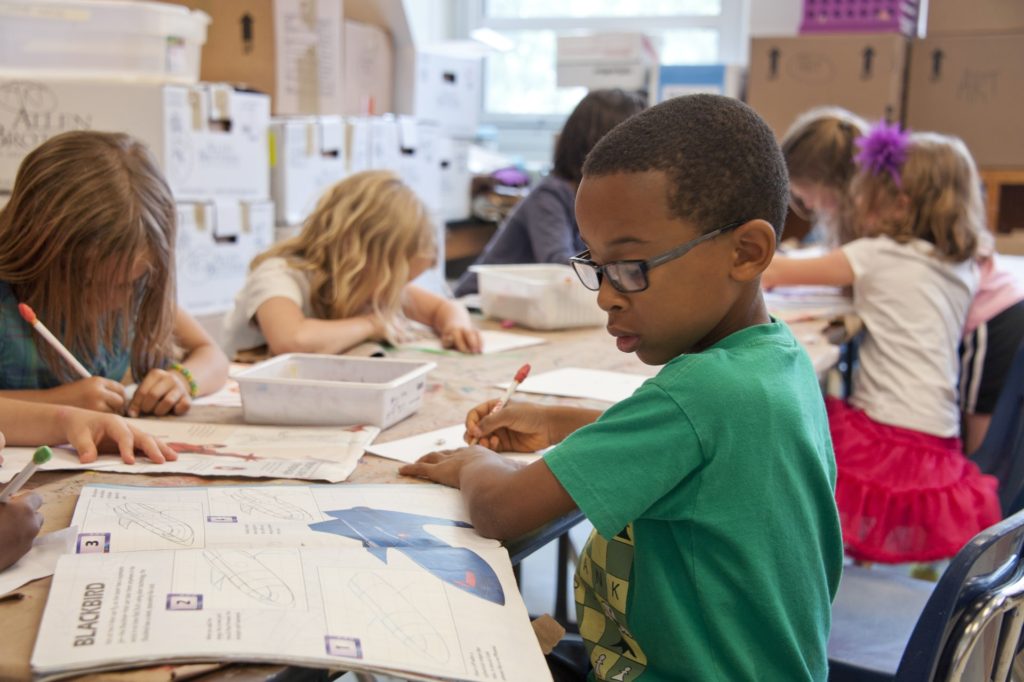Table of Contents
Most people don’t like change. This is especially true of new environments and research shows that this is most difficult for students with learning difficulties such as ASD. People often feel uncomfortable being in new places with unfamiliar sights, sounds, and smells, but recent research suggests there may also be benefits of a new learning environment to refresh learning, especially when starting to learn something new. The new environment, though it can stimulate a bit of discomfort due to the lack of familiarity, can also stimulate the formation of new and stronger memories.
In schools, students are often confined to the same room and even the same desk for an entire year’s worth of learning. While assigned seating can be useful for placing students next to peers that will support their learning, if the seating chart doesn’t change then not only will students only get to work with and learn from a small percentage of their peers, but their brains will have a harder time separating out and remembering different things they’ve learned as everything blends together. This article will cover a recent neuroscience study that highlights the importance of change in memory formation and give a few helpful suggestions for how teachers can utilize this knowledge to keep things fresh in their classrooms.
New Research on Learning Environments
The study out of Cedars Sinai Medical focused on the role of two distinct types of neurons and the role they had in segmenting memories for storage in the brain. Due to being a medical facility, the researchers at Cedars Sinai had access to patients who were undergoing treatments for epileptic seizures and had electrodes implanted into their brains. This allowed the researchers a closer, more detailed look at neuron function that is generally possible with less invasive methods.
The patients were asked to watch several video clips while neurons in their medial temporal lobe were being monitored by the implanted electrodes. The researchers found that there were certain groups of neurons that fired when scenes changed or there was some other clear shift in the narrative.
They identified two distinct types of neurons, some that they labeled “Boundary Cells” fired any time a change happened in the narrative of the video clips and the other type that they labeled “Event Cells” fired only when there was a larger shift in the narrative such as a complete scene change.
These novel neuron types helped the researchers to identify a key aspect in how the brain organizes and stores episodic memories due to what they called “Soft Boundaries” and “Hard Boundaries”. While the way each brain handles new information will be unique to the individual, generally a hard boundary is encoded when a major shift or scene change has occurred and a soft boundary is more akin to a new person joining an already existing scene or the tone of a scene shifting significantly like from happy and joyful to more somber or vice versa.

In the press release for the study, the head researcher, Dr. Ueli Rutishauser compared the effect of these boundary cells to how a computer uses folders in order to organize files. “A boundary response is kind of like creating a new folder on your computer. You can then deposit files in there. And when another boundary comes around, you close the first folder and create another one.” (Cedars-Sinai Medical Center) A hard boundary can be thought of as starting a completely new folder while a soft boundary is more like creating another sub folder within the folder that is already active.
This organization structure helps to make sense of how the brain handles the never ending narrative of life and how it links information together that occurred in the same context. These boundary cells help to keep things that happened together in the same context linked for later recall. Rather than human brains being a vat of disconnected memories of different times and places floating around aimlessly, these boundary cells help to reveal the underlying structure of episodic memory.
In addition to their findings about the function of these newly understood neurons, the researchers made some interesting discoveries about how these boundary cells helped and actually hindered later recall of information. The researchers had the participants view still images and asked them whether they had seen them in the video clips and to identify where.
While the participants were better able to remember things that happened directly before and after a boundary, interestingly, their ability to remember the order was actually worse when trying to remember what happened when. So the benefits of a new learning environment need to be considered mindfully to not separate information that needs to remain connected.
“Boundary-induced neural state changes during encoding predicted subsequent recognition accuracy but impaired event order memory”. (Zheng et al.) In other words, while it is easier to remember what is in a mental folder, especially right after switching to a new one, the brain may struggle to remember which folder came first chronologically after they have been separated. The benefits of a new learning environment are significant for remembering new individual pieces of information, but may inadvertently divide concepts that actually are connected.
Using Multiple Learning Environments to Boost Memory
While it makes sense that episodic memories have to be broken up and stored in the brain somehow in order to be recalled effectively, it can be difficult to know how to properly evoke a response from these boundary cells and start a new mental folder for learning. There are many ways a teacher could mindfully differentiate one unit or section from another to boost students’ memories, but one way suggested by the authors of the study was to utilize the benefits of a new learning environment to separate the new information into a new context.
“The effect of context is actually quite strong. If you study in a new place, where you have never been before, instead of on your couch where everything is familiar, you will create a much stronger memory of the material.” (Cedars-Sinai Medical Center)
Dr. Ueli Rutishauser
While teachers can rarely if ever just decide to pop over into a new classroom for each unit, the changes don’t always have to be that drastic or permanent to significantly change the environment. While it isn’t always possible for a teacher to switch to a new classroom, there is often the possibility to temporarily use a new space when introducing a new unit. Even switching up the seating chart may help at least to create a soft boundary and help students refresh their memories for new content based on the new learning environment gained from the new perspective on the classroom.

For example, Literature teachers often will take their students into the school’s theater when introducing a unit on plays. While they might not have every single class in the theater during the unit, simply introducing and front loading some of the new content in the new context will help students remember the basics and have a better foundation to go back to their regular classroom for future lessons.
Back in their regular classroom, the teacher can have students in newly assigned seats. The new visual perspective on the classroom along with being near to new peers will help to mindfully separate this “episode” of learning from what has been covered before. Similarly, science teachers can use the science lab to create a boundary between new concepts and introduce students to an experiment that highlights what they will be learning during the new unit.
Giving students a model experiment in the lab before going back to study in class will give students a clear understanding of what they are going to be doing and in addition to that learning being done in the context it is most useful, something well established research shows is vital for learning, this approach also uses episodic boundaries to help students separate out different concepts in science and recall important information from lab days more effectively. Because the brain will create a hard boundary each time the students go to the lab, things that are learned on lab days will be remembered better than things taught in the regular classroom.
However, teachers should be wary of overusing this strategy and trying to elicit the benefits of a new learning environment every day. If every lesson takes place in the “new” environment, the “new” environments will quickly lose their newness and students won’t remember concepts any better than they did in their original classroom.
Teachers need to mindfully choose days to utilize the new space when they are front loading information or wanting to actively separate similar ideas to help students see the differences. In the same way, having students constantly switch seats or having free seating will remove this as an option for mindfully dividing units.
Additionally, teachers should avoid putting sequenced information or steps to a process into different contexts. Since the research showed that new environments for learning are good for remembering individual pieces of information better, it’s important to remember that they can make it more difficult to remember the order of information.
So, when students need to remember steps of a process or it is more important to understand information in its chronological context such as is often the case in social studies, it is better to not disrupt that learning by shifting learning environments. While shifts can be good for creating a sort of “soft reset” and refreshing students’ abilities to remember information, this reset may decouple information that is better left connected in the same episodic memory.
Conclusion
There can be a lot of creativity and nuance in how teachers utilize the knowledge from this research to mindfully couple and decouple information based on their expertise in their subject area. Additionally, the benefits of a new learning environment aren’t exclusively bound to physical location either.
Inviting a guest speaker, redecorating the classroom, and even fun events like having students dress up or bring food for the start of a new unit can have a drastic effect on the environment students experience. Any mindful changes in the sensory perceptions of the students can elicit this boundary cell activation. Teachers can use this knowledge to inspire creative ways to introduce new units and refresh students for another section of mindful learning in a new context.
Want more like this? Make Lab to Class a part of your weekly professional development schedule by subscribing to updates below.
References
Cedars-Sinai Medical Center. How Does the Brain Make Memories?, Cedars-Sinai Medical Center, 4 Mar. 2022, https://www.cedars-sinai.org/newsroom/how-does-the-brain-make-memories/.
Zheng, Jie, et al. “Neurons Detect Cognitive Boundaries to Structure Episodic Memories in Humans.” Nature Neuroscience, vol. 25, no. 3, 2022, pp. 358–368., https://doi.org/10.1038/s41593-022-01020-w.



